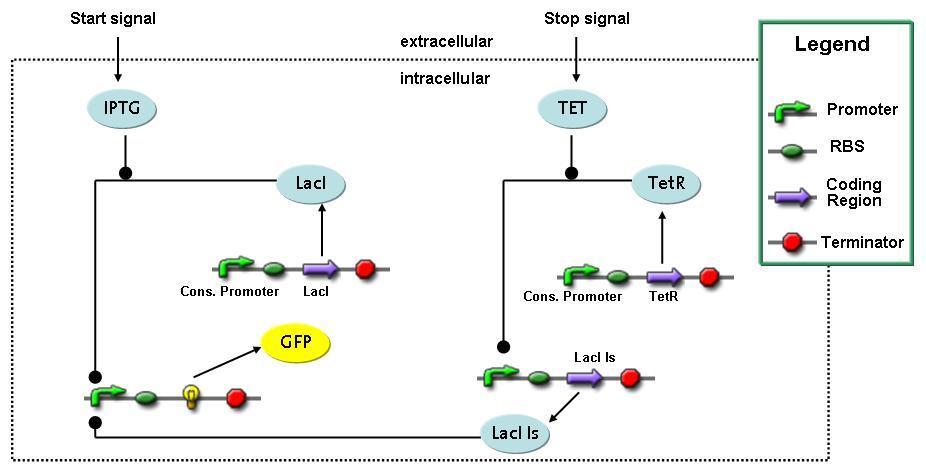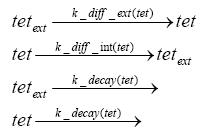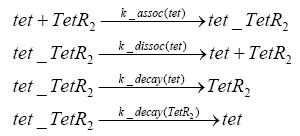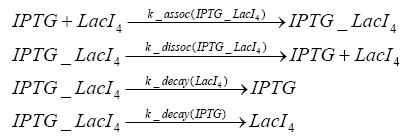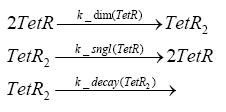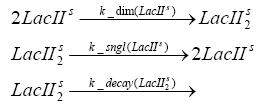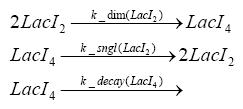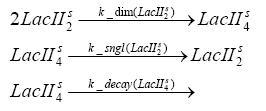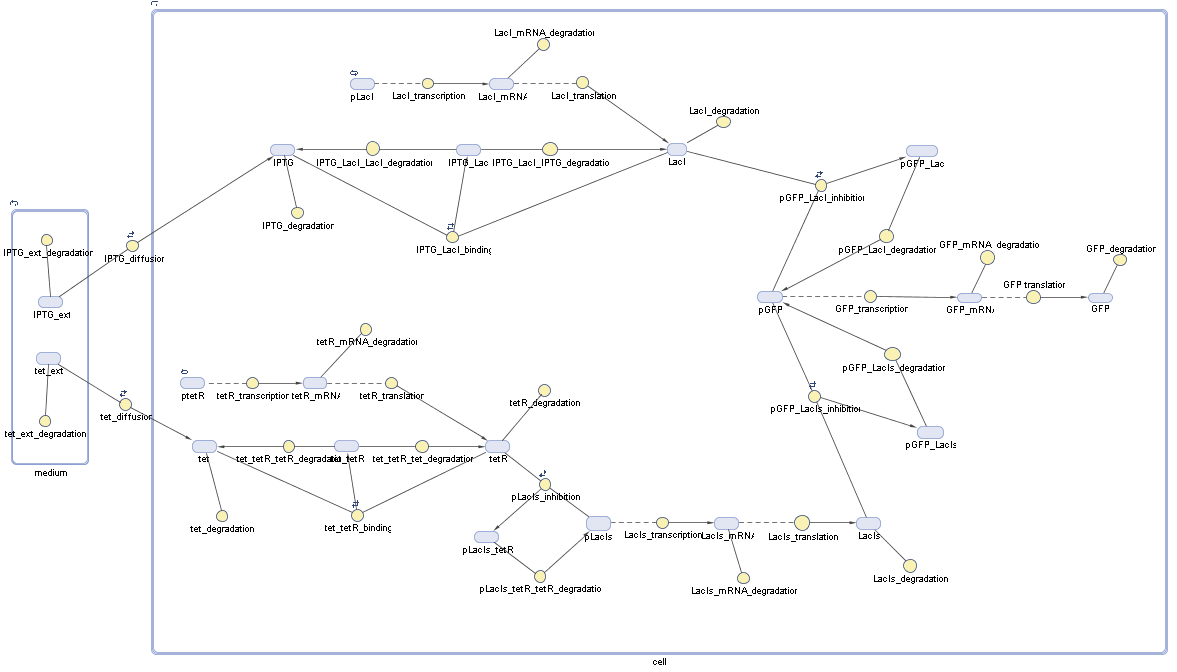Team:ETH Zurich/Modeling/Switch Circuit
From 2008.igem.org
Switch CircuitDetailed Modeldiffusion of IPTGIn order to switch on the sircuit, we induce with IPTG. When we add the IPTG into the medium diffuses reversibly between the medium and the cells, where it is slowly degraded. In a chemostat extracellular IPTG is washed away. diffusion of tetThe second inducer which is used in our system is tet. This also diffuses into the cell when it is added into the medium and degrades slowly. binding of tetR to LacI-promotor and LacIIs-promotorbinding of LacI and LacIIs to GFP-promotorbinding of tet to tetRbinding of IPTG to LacItranscription and translation of LacItranscription and translation of LacIIstranscription and translation of tetRtranscription and translation of GFPdimerization of tetRdimerization and tetramerization of LacI and LacIIsImplementationThe model of the switch circuit has been implemented using the Simbiology Toolbox in MATLAB. For the sake of simplicity, the effects of dimerization and dimerization/tetramerization of tetR and LacI/LacIIs have been neglected. So we did with the additional steps involving the RNApolymerase in the transcription of proteins and the ribosomes in the translation of proteins. SimulationIn order to get some useful results out of this model, we ran deterministic and stochastic simulations using Mass-Action-Kinetics. The stochastic simulations turned out to be computationally very demanding and yielded no additional results compared to the deterministic ones. Results and DiscussionParametersIn this section you can find all the parameters used in the simulation.
References(1) "Spatiotemporal control of gene expression with pulse-generating networks", Basu et al., PNAS, 2004 (2) "Genetic circuit building blocks for cellular computation, communications, and signal processing", Weiss et al., Natural Computing, 2003 (3) "Predicting stochastic gene expression dynamics in single cells", Mettetal et al., PNAS, 2006 (4) "Engineered gene circuits", Hasty et al., Nature, 2002 |
 "
"
